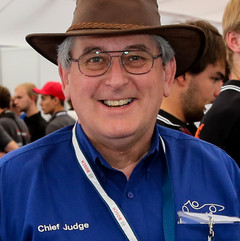I had a timely reminder today that it is a long time since I wrote a new blog article.
I guess getting involved with FS India and FS Russia has distracted me, but FSG is still my primary Formula event, so here goes.
Vale Bill Mitchell
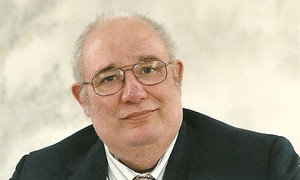 To start this blog on a sad note, in January we lost another senior international Design Judge when Bill Mitchell passed away at his home in the US.
To start this blog on a sad note, in January we lost another senior international Design Judge when Bill Mitchell passed away at his home in the US.
Bill had never been a judge at FSG because his health precluded airline travel, but had he been available, I would have loved to have him in Hockenheim. Team members who have attended FSAE in the US would have met Bill Mitchell giving feedback on their Design Report.
Bill was best known for his suspension kinematics program ‘Racing by the Numbers’, probably the first of such programs available and an industry favourite until newer graphically based kinematics programs became available.
Bill Mitchell passed away on January 17th at 68 years of age. A sobering thought is he was the same age as me.
A positive reminder of Bill’s passing is that many of the Senior Judges are not getting any younger, so there is a need to form a succession by having new judges come on board.
There is also a need for Judges with a different set of skills. Most of the current Senior Judges have little or no experience with hybrid or modern electric vehicles, so judges with these skills are needed.
If you think you have the skills and a desire to be part of FSG, submit an application to volunteers@formulastudent.de. We would love to hear from you.
Rules Committee
The International Rules Committee has a new Chairman from this year when Dr. Andrew Deakin from FSUK takes the seat. This is an important appointment as Andy is the first non US chairman of the committee and so will bring a more cosmopolitan overview to the committee’s business. FS Austria is now part of the Global committee and has a seat on the Rules group. With major events waiting in the wings such as FS Russia, there will be more pressure applied to have genuine global rules rather than the US-centric rules we have had to date.
The reluctance of the Rules committee in the past to adapt to global conditions has threatened to fragment the unity of the global rules that make all FS cars suitable for all competitions. That is not a good situation.
This was brought to a head recently when the FSG management committee instigated some changes to the Formula for cars running at FSG. These related to suspension mounted aero (something that should never have been allowed in the first place) as well as some other needed amendments.
This decision dropped the cat among the pigeons in the global FS/FSAE community, and subsequently the amendments were mostly delayed until they could be discussed at the next Rules Committee meeting.
Such a decision by FSG was necessary to break the rules logjam that has existed because of the unwillingness of the SAE in the US to change a formula they see as working well. But they only see what is happening in the US as SAE representatives rarely visit overseas events, (though we did have Mrs Kaley Zundel from SAE at FSG last year.)
The global rules do need revising and if possible the rule book needs amendment, weeding out many of the unnecessary or duplicated rules it has accumulated over the years, many added without general discussion with the global FS community.
Failure to do so will see fragmentation, with individual competitions introducing differences in the rules or the scoring.
We should never forget that FS is an educational exercise with a motorsport theme rather than a pure motorsport event and the rules should reflect this.
There is currently a thread on the FSAE.com forum, called ‘Reasonable suggestions for Rule Changes/Amendments/Improvements’ and I suggest readers should read the thread. If they have some suggestions, then get your ideas out there. FSAE.com is read by all rules-makers in the FS/FSAE community and so the forum operates as a communal mouthpiece.
But before contributing, remember what the intent of the FSG event is, an educational exercise, so bright ideas that will make the cars go faster will probably not get much attention.
Engine Choices
One suggestion I like is to increase the maximum engine capacity from 610cc to 650cc or something similar. This suggestion has been rejected by the rules committee in the past on two grounds.
- The cars are fast enough already without giving them more power, and
- all the serious teams with 600cc engines would be forced to bore them out in order to be competitive.
Sadly, these responses showed the Rules Committee was out of touch with reality. There is already a ‘power control’ in place, the intake restrictor! Should 650cc cars be ‘too fast’, a change in restrictor size would quickly address the situation.
Currently, the mainstream engine choice for teams is a 600cc inline four from a sports-bike or a 450cc single cylinder engine from a dirt-bike.
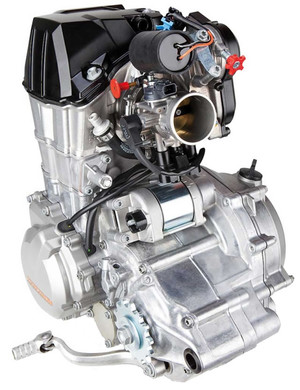
KTM 450cc engine
The problem with the 450cc singles is they are very difficult to obtain second hand in good condition. They are short life engines that are very expensive to recondition and when they are available on the second hand market or at a motorcycle breakers, they are usually close to the end of their service life. So the most satisfactory situation would be to buy these engines new from the manufacturers who will supply them.
A popular intermediate step between the single and four cylinder engines has been the Aprilia 550cc V2. This engine has been moderately successful, but has brought many teams nothing but heartache with tuning difficulties and questionable reliability. Most teams who have used this engine in the past have abandoned it and the 450cc and 550cc Aprilias are no longer in production.
The 600cc four is a safer choice for a new, inexperienced or poor team, but recent history shows that an experienced team can use the weight reduction available with a 450cc single.
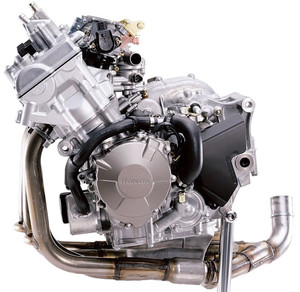
Honda CBR600RR engine
The 600 i4s are (or were) more commonly available on the second hand market because there is no shortage of young sports-bike riders whose enthusiasm exceeds their ability, resulting in insurance write-offs turning up in breakers yards with low miles and all electronics attached.
However, the breakers are now well aware of what a 600cc engine is worth to a FSAE team, so the prices of these engines have gone up in recent years.
If the rules permitted an increase in capacity to permit the use of engines with a capacity of less than 700cc, the choice of engines opens up dramatically, with twin, triple and V2 engines available from many more makers as most Japanese and European makers have twin cylinder engines in this size and Korean and Chinese makers make 650cc engines.
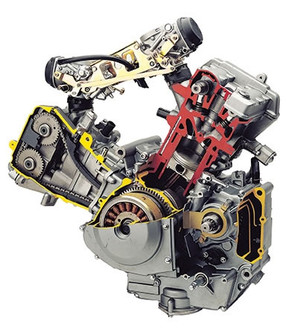
Hyosung GT650 engine
This decision would open the choice of engines and make the sourcing of engines easier, especially for teams from countries where 600cc sports bikes are either not available or are not permitted for sale.
Of course, all this only affects the entrants in the combustion class of FS competitions, a class which is becoming less relevant as Universities see more educational opportunities if they concentrate on electric vehicles.
The EV’s, of course, have a need for rules revisions. It has been shown that attempting to permit EVs and Combustion cars to compete directly against each other has not led to fair competition. Rules changes are mooted to level the performance advantage of the electric cars in order to present a more level playing field.
Other Rule Changes
Other rules changes mooted for next year include changes to the aerodynamic devices permitted. Some years ago, the aero rules were liberally relaxed in order to spur the development of aero devices. That has been so successful that any team serious about winning a FS event must have an aero package. Most front running teams tell me a wing package can contribute between 50 and 100 points to a team’s score, depending on how well developed the package is.
The intent was to restrict the rules as was seen necessary after a year or two, but this intent was lost due to changes in the Rules Committee and the original plan was forgotten as committee members rotated out, so the relaxed aero rules were permitted to exist for longer than the original intent, thereby skewing the balance of the competition.
Finally, another issue concerning event organisers and the Rules committee is the number of cars seen up on two wheels at recent events. Cars with aero packages that include large wing endplates are particularly susceptible to being blown over in this situation if they encounter a side wind gust.
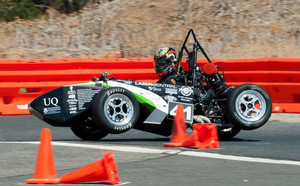
A high speed rollover is something none of us want to see, so expect to see a change in the tilt table rule or implementation, or possibly this will be taken into account when the aero rules are revised.
In any event, I think the new committee are going to have to make more revisions to the Rules book than we have seen in any one year in recent times. I wish them well in their deliberations.
So, until next time, hopefully not so long, keep safe and I look forward to seeing you all again in July at Hockenheim.

Pat

